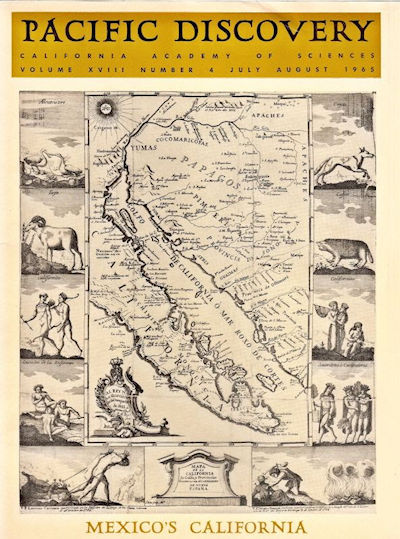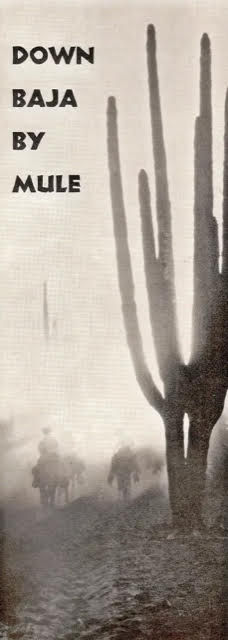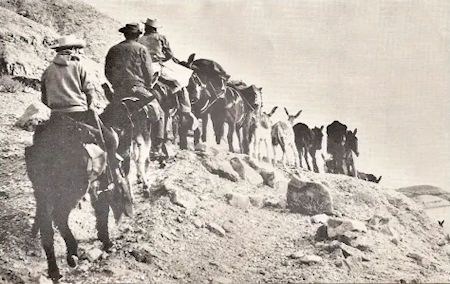 |  |

Eve Ewing, a vibrant 89-year-old, isn't your typical retiree. Her life has been an extraordinary adventure, primarily spent exploring the rugged beauty of Baja California. For 50 years, as she humorously puts it, she "sat on her ass" – atop a mule, traversing the peninsula's diverse landscapes and forging a deep connection with its people and history.
"At 89, I just can't ride like I used to," Eve admits, though a twinkle in her eye suggests her adventurous spirit remains undimmed. "I can still ride side-saddle, though." Her preferred mode of transport, the mule, wasn't just a matter of personal preference. “Much of Baja," she explains, "was not suitable country for horses. It's only in recent decades that ranchers near La Constitución can get alfalfa or meadow grass. In the old days, there was no readily available feed for horses. People had to ride mules."
Mules, being half burro, are natural browsers, thriving on the dry palm fronds and sparse vegetation of the Baja terrain. "Horses and cattle are grazers," Eve says, "their digestion doesn't do well with lots of browse." The resourcefulness of early Baja inhabitants is evident in their approach to keeping horses. "They would cut mesquite and palo verde if they needed a horse around their ranch for more than a few days. But then they'd have to let them go, track them, and catch them again when needed. It was such a different world back then."

Eve's stories paint a vivid picture of a Baja vastly different from the one we know today. "La Paz was a burgeoning city, but lacked agricultural land," Eve explains. "Traveling salesmen would start near Loreto, go to San Javier, San Miguel, and all the other missions along the coast, collecting fruits, citrus, chickens, pigs, and all sorts of cargo. It would take them a week to amass a trainload to take to La Paz. That was a recua." These journeys, often along dirt roads and old mission trails, culminated in a police escort near La Paz to clear the highway for the mule trains.
Eve's passion for Baja extends beyond its landscapes and history; she's deeply connected to its people. "I did it because I wanted to explore. I fell in love with the ranchers, the people, and the rock art." She adds with a chuckle, "I sat on my ass for 50 years."
One of the highlights of Eve's adventurous life was her participation in the Meling Mule Expedition, the first to travel the length of the Baja peninsula from Tecate to Cabo in nearly a century. "We didn't know for sure if we were going to come to a spot where the next water hole was four days south," she recalls. "We might have had to turn around and come back."
The expedition, led by Andy Meling and Joanna Alfred, was a leap into the unknown. Eve remembers reading an article advertising the trip and inviting those who wanted to join. In the article Joanna was asked about water sources. "She said, 'You follow yellow jackets!' I thought, 'This crazy woman! They're going to die!’" Little did Eve know that this adventure would soon become hers as well.

Eve’s father, an oceanographer, studied the formation of lagoons and, with his colleagues, conducted a census of the California gray whale, nearly hunted to extinction. "My dad had a converted seaplane," she says. "He would take people like Ted Walker, Carl Hubbs, and Ray Gilmore to study the whales." Eve often accompanied her father on these trips, sparking her own fascination with the peninsula.
It was during one of these trips to Bahía de los Ángeles in 1963 that Eve's life took a pivotal turn. Her father, using a shortwave radio he had provided to a local resident, contacted her with an unexpected invitation. The Meling expedition had arrived in LA Bay after a grueling month-long journey from Tecate. They needed supplies and someone to fill a vacancy. "He said, 'Eve, these people have arrived on mule. It has taken them a month, longer than expected, and they need to leave. They need to fill a space. Would you like to come?'"
Knowing how to ride since the age of four, and having spent summers on a ranch with her godfather, Eve readily accepted. She gathered supplies – horseshoe nails, dehydrated eggs, chaps, and a canvas duffle bag – and was flown down to LA Bay.
The stories Eve tells are filled with colorful characters and close calls. She recounts a tale told by Dick Daggett, an early miner who had hoped to lead the Meling expedition. Daggett described a time when his lead burro found a water hole, only to discover that the "rock" in the water was actually a dead cow. “I boiled and strained that water, but I still couldn’t get the dead cow smell out of it,” he told her. But rather than dissuade her from the journey, it only spurred her on.
The Meling expedition was a journey of discovery, both for the participants and for the scientists who accompanied them. "We had a botanist and a geologist," Eve recalls. "They wanted to collect plants. They found similar plants on the tops of those mountains to what you find in San Diego County – juniper pines, manzanita. What they know now is that those mountains were like islands in the sky."
The expedition's journey to San Ignacio took a month, slowed by the botanist's meticulous work. "At night, he had to dry the plants by the fire. They are in the Natural History Museum of San Diego now. He has the record for finding all kinds of plants that no one knew were down there."

Eve's involvement with Baja didn't end with the Meling expedition. She became a passionate explorer of the region's cave paintings, venturing into remote areas with local guides. "I just, after 50 mule trips down to the cave paintings, I stopped counting," she says. "I explored all over the mountains." Her insights into the rock art and the people who created it have contributed significantly to our understanding of Baja's prehistory.
Eve's stories are a testament to the allure of Baja California, a place that has captured her heart and shaped her life. From riding mule trains to exploring ancient cave paintings, she has embraced the wild beauty of the peninsula and shared its wonders with the world. Her experiences, documented in articles, magazines like Geo, and even a PBS documentary, "The Journeys of Harry Crosby," offer a unique glimpse into a Baja of yesteryear, a Baja that continues to inspire and beckon adventurers. While she may no longer be traversing the peninsula on mule back, Eve Ewing's spirit of adventure remains as strong as ever, a living legacy of a life dedicated to exploring the magic of Baja California.
Photo of Eve Ewing by Cody McClintock.
Scanned images from Pacific Discovery Magazine courtesy of David Kier.